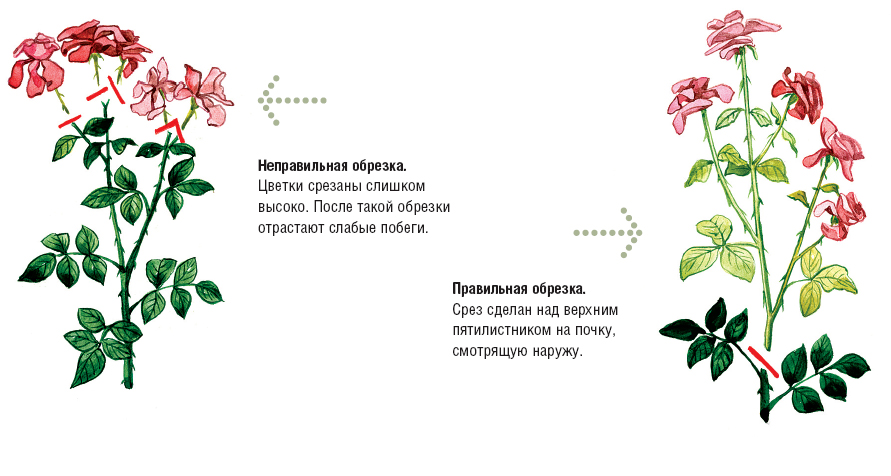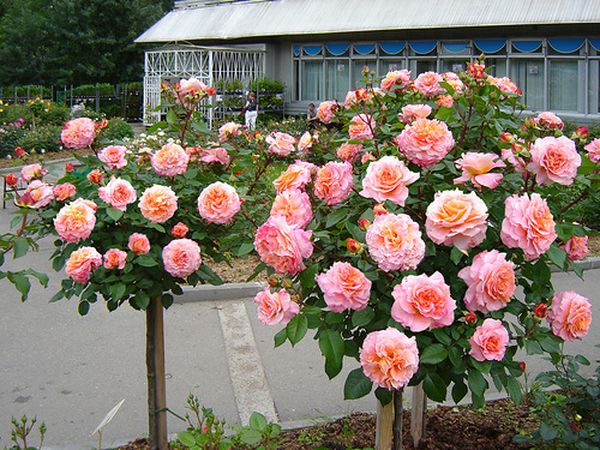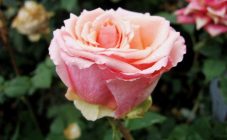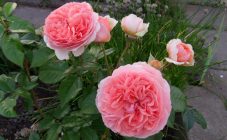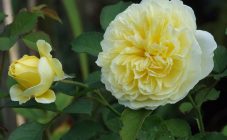Augusta Luise is a rose, shaped like a flower, captured on old canvases. A bright, charming aristocrat with impeccable large flowers and a unique sweet aroma. It first appeared in 1867 in France thanks to the scientist Guyot, but the species did not officially take root. Then the flower was obtained by crossing tea and remontant roses in 1999 in Germany with the help of the breeder Hans Jürgen Evens from the Tantau company, in honor of the anniversary of Goethe and named after Countess von Stolberg (1753-1835).
This flower has received many world awards and was recognized as the best three times - in Australia in 2004 and in New Zealand in 2009 - for the best aroma and in 2010 - as the finest variety of hybrid tea rose; Augusta Louise has other names: Fox-Trot, Rachel, Westenra, Hayley. Majestic and flirtatious, refined and sophisticated, as if the Countess herself generously gave her a piece of herself, the favorite of gardeners rightfully occupies a leading position in the market.
Description
Augustine Louise rose conquered love with its double flowers, in which several saturated shades can be combined at the same time - champagne, orange, golden, peach, pink, cream and the smell of ripe fruits and fresh raspberries. The size of the bush reaches 120 centimeters in height and 80 cm in width, the size of the inflorescence is up to 15 cm in diameter, it is racemose, like a whole bouquet. The foliage is dense, dark green, matte.
Rosa Augusta Luis is unpretentious to disease and frost resistant. It blooms all summer and even in late autumn you can find flowering bushes. It reacts poorly to rain and does not like the sun's rays; when choosing a soil, it is recommended to give preference to warm areas, protected from the wind.
The rose of Augusta Louise is blooming in waves. The first is the most fragrant, then the plentiful and the last is the protracted stage. Initially, the bud, which has the shape of a yellow glass with burgundy specks, then the blossoming flower has 40 to 55 petals and, like a real lady, changes its dresses depending on the time of day and weather. The velvet skirts of the plant are fragrant and seem to glow from the inside. A cut branch can pass for a whole bouquet due to the amount of flowers and buds in full bloom. In a vase, Augusta Luise stands for about 10 days, spreading its wonderful aroma around.
Planting and watering
Rosa Augusta Louise is not very sprawling, so the seedlings can be planted at a distance of 50 cm from each other. Planting is best done in mid-April, when the ground has already warmed up or at the end of September, a month before frost, and cover the bush for the winter. You can create a hedge by planting a plant along a terrace or gazebo, choosing boxwood or juniper as a background for a rose. The soil should be chosen well fertilized, with low acidity, loam is well suited. It is imperative to drain the soil to remove excess moisture.
Before planting, the seedlings purchased from the nursery should be put in water overnight. Make a mixture of sand and humus, you can add bone meal. Dig holes from 50 to 80 cm deep, fill the prepared compost by 10 centimeters and water. Cut off dry roots from the seedling and plant 5 cm deeper than the graft site. Put pegs around and cover the plant to avoid burns on the leaves. When the bush takes root, the shelter can be removed and feeding can begin.
In hot weather, water procedures should be increased, but this must be done carefully so that moisture does not stagnate, otherwise the plant will get sick with purulent lesions.
Care, pruning and feeding
Rose Louise needs timely feeding and pruning. The first time feeding must be done before planting, using three-year-old humus. The second - during the appearance of buds, add phosphorus and coal during evening watering to reduce the acidity of the soil. You do not need to feed the plant for the winter. In spring, fertilize with compounds containing nitrogen, and during flowering, Louise needs phosphorus and potassium. Fertilize once every 2 weeks before watering.
The flower must be covered for the winter by treating it with fungicides. Although this variety can withstand frosts down to −23 ° C, in connection with which many gardeners believe that it is enough just to huddle the plant for the winter, it is still recommended to cover the bush. Loosen the ground around the bush, huddle the plant, cover the roots with branches of spruce branches, build a wooden frame, stretch a dense fabric and press the edges of the material to the ground.
To ensure the rapid emergence of new buds, it is required to cut off dry inflorescences in a timely manner. There are several rules for pruning a plant, in this case you only need to use a well-sharpened, non-rusty garden tool - garden shears, a saw, a pruner - and a var for processing the cuts. The first procedure is carried out in early spring, removing dry and damaged areas, leaving only a few healthy shoots. The second pruning for a strong bud is a diagonal cut, shortening the shoots to 20 cm.This procedure must be carried out every spring.
The third pruning should be carried out at the beginning of summer, remove empty and blind buds, cutting them off from the leaves. Then fertilize August with a fertilizing with nitrogen content. Throughout the season, cut off unnecessary shoots and wild shoots, they grow from the roots of grafted plants.
Young bushes in the summer need to be pinched as soon as 4-5 leaves appear. Do the same with young stems until the plant begins to bloom. Sick and weak bushes can be brought back to normal in the same way. Infected, weak, non-flowering and faded stems should be cut off along with the lower leaves just above the bud, this will help the appearance of fresh shoots. By the end of summer, pruning is finished.
Before wintering, Augusta Luise is pruned and processed. Cut off all inflorescences and buds, remove dry and diseased branches, remove leaves, leaving only trunks of no more than 5 pcs. and shorten them to 25 cm. If you do not follow this procedure, in winter under cover the bush may begin to rot. A plant treated in this way will be full of strength in spring, which will allow it to bloom longer and more abundantly.
Cut branches and leaves can be with diseases, so it is recommended to burn them.
Diseases
Once a month, it is necessary to inspect the bushes to identify diseases. Despite the fact that rose Augusta is not afraid of powdery mildew and black spot, it is not bypassed by aphids. And at times this pest on the bushes is incredibly abundant. Therefore, inspecting flowers in time, it is possible to prevent diseases.
Well, if an insect has already appeared, pesticides, of which there are quite a lot, will help to cope with it. But do not get carried away with them, as they may well harm the plant. You can try to exterminate the pest using folk methods - soap solution or tincture of garlic and onion in equal proportions. Pruning for preventive purposes also helps. If there are too many aphids, it is recommended to use insecticides.
If the leaves of the bush turn brown, this is a burn and it is treated with drugs containing antibiotics, such as phytolavin. You need to spray once a week during the season.
After winter, a fungus may appear on the flowers - black spots.Treat garden shears with chlorhexidine so that the infection does not spread, cut off diseased shoots, going into healthy areas and treat the cut with a special Ranet paste. Then, early in the morning, spray the plants with copper sulfate.
Augusta Louise won the attention of landscape designers for a reason, because she looks no worse than park varieties. It will definitely become a decoration for any site or garden. Ideal with rose bushes Louise Audier and Louise Bagnet.
